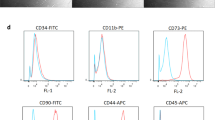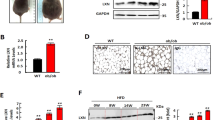Abstract
Obesity is a major public health problem worldwide and a risk factor for certain diseases, including cardiovascular disease, diabetes, cancer, and depression. Unfortunately, currently available anti-obesity drugs have failed in the long-term maintenance of weight control. It has been a challenge to design novel drugs that could potentially treat obesity or prevent uncontrolled weight-gain which lies underneath the pathology of obesity. Since obesity in a way is a consequence of the accumulating new mature adipocytes from undifferentiated precursors which is a process also termed as adipogenesis, drugs that might control adipogenesis could be beneficial for the treatment of obesity. In the current study, combined effect of sodium pentaborate pentahydrate (NaB) and pluronic F68 on adipogenic differentiation was examined by administering various combinations of the two agents to human adipose-derived stem cells (hADSCs) in in vitro. Immunocytochemistry and quantitative RT-PCR were performed to evaluate the levels of adipogenesis-promoting genes such as peroxisome proliferator-activated receptor-γ (PPARγ), fatty acid binding protein (FABP4), and adiponectin. Results indicated that expressions of all these three genes were restrained. Furthermore, Oil Red O staining revealed that lipid vesicle formation was reduced in hADSCs treated with differentiation medium containing NaB/F68 combination. Finally, expression levels of Hippo pathway kinases Lats2, MST1, and scaffold protein Sav1 were reduced in these cells, suggesting a possible link between Hippo pathway-dependent downregulation of PPARγ and the NaB/F68 treatment. Herein, we showed that combination of NaB and F68 curtails adipocyte differentiation by inhibiting the adipogenic transcriptional program leading to a decrease in lipid accumulation in adipocytes even at very low doses, thereby uncovered a striking opportunity to use this combination in obesity treatment.






Similar content being viewed by others
References
Nombela-Arrieta C, Ritz J, Silberstein LE (2011) The elusive nature and function of mesenchymal stem cells. Nat Rev Mol Cell Biol 12(2):126–131
Beltrami AP, Cesselli D, Bergamin N, Marcon P, Rigo S, Puppato E, D’Aurizio F, Verardo R, Piazza S, Pignatelli A, Poz A, Baccarani U, Damiani D, Fanin R, Mariuzzi L, Finato N, Masolini P, Burelli S, Belluzzi O, Schneider C, Beltrami CA (2007) Multipotent cells can be generated in vitro from several adult human organs (heart, liver, and bone marrow). Blood 110(9):3438–3446
Guilak F, Lott KE, Awad HA, Cao Q, Hicok KC, Fermor B, Gimble JM (2006) Clonal analysis of the differentiation potential of human adipose-derived adult stem cells. J Cell Physiol 206(1):229–237
Choudhery MSB, Muise M, Pierce A, Harris J, T D (2014) Donor age negatively impacts adipose tissue-derived mesenchymal stem cell expansion and differentiation. J Transl Med 12:8
Di Battista JAS, Kizilay W, Hamade O, Abou Merhi E, Mebarek R, Abdallah S, Badran D, Saad B, Abdalla FK, EFaour WH (2014) Proliferation and differentiation of human adipose-derived mesenchymal stem cells (ASCs) into osteoblastic lineage are passage dependent. Inflamm Res 63(11):907–917
Ahmadian MS, Hah JM, Liddle N, Atkins C, Downes AR, Evans M, M R (2013) PPARgamma signaling and metabolism: the good, the bad and the future. Nat Med 19(5):557–566
Rosen ED, Walkey CJ, Puigserver P, Spiegelman BM (2000) Transcriptional regulation of adipogenesis. Genes Dev 14(11):1293–1307
Scheja L, Makowski L, Uysal KT, Wiesbrock SM, Shimshek DR, Meyers DS, Morgan M, Parker RA, Hotamisligil GS (1999) Altered insulin secretion associated with reduced lipolytic efficiency in aP2−/− mice. Diabetes 48(10):1987–1994
Coe NRS, Bernlohr MA, A D (1999) Targeted disruption of the adipocyte lipid-binding protein (aP2 protein) gene impairs fat cell lipolysis and increases cellular fatty acid levels. J Lipid Res 40(5):967–972
Kershaw EE, Flier JS (2004) Adipose tissue as an endocrine organ. J Clin Endocrinol Metab 89(6):2548–2556
Yamauchi T, Kamon J, Waki H, Imai Y, Shimozawa N, Hioki K, Uchida S, Ito Y, Takakuwa K, Matsui J, Takata M, Eto K, Terauchi Y, Komeda K, Tsunoda M, Murakami K, Ohnishi Y, Naitoh T, Yamamura K, Ueyama Y, Froguel P, Kimura S, Nagai R, Kadowaki T (2003) Globular adiponectin protected ob/ob mice from diabetes and ApoE-deficient mice from atherosclerosis. J Biol Chem 278(4):2461–2468
Ardestani A, Lupse B, Maedler K (2018) Hippo signaling: key emerging pathway in cellular and whole-body metabolism. Trends Endocrinol Metab 29(7):492–509
An Y, Kang Q, Zhao Y, Hu X, Li N (2013) Lats2 modulates adipocyte proliferation and differentiation via hippo signaling. PLoS One 8(8):e72042
Park BH, Kim DS, Won GW, Jeon HJ, Oh BC, Lee YJ, Kim EG, Lee YH (2012) Mammalian ste20-like kinase and SAV1 promote 3T3-L1 adipocyte differentiation by activation of PPARgamma. PLoS One 7(1):e30983
(1988) BASF Performance Chemicals, BASF, Ludwigshafen, Germany
BASF Technical Information (1989) Pluronic PE types. BASF, Ludwigshafen
Camacho-Cristobal JJ, Rexach J, Gonzalez-Fontes A (2008) Boron in plants: deficiency and toxicity. J Integr Plant Biol 50(10):1247–1255
Hakki SS, Dundar N, Kayis SA, Hakki EE, Hamurcu M, Kerimoglu U, Baspinar N, Basoglu A, Nielsen FH (2013) Boron enhances strength and alters mineral composition of bone in rabbits fed a high energy diet. J Trace Elem Med Biol 27(2):148–153
Nielsen FH (2004) Dietary fat composition modifies the effect of boron on bone characteristics and plasma lipids in rats. Biofactors 20(3):161–171
Wu HM, Wang Q, Gao CN, Wei XL (2008) Effect of boron and fluoride on the expression of enamelin in rat incisor. Hua Xi Kou Qiang Yi Xue Za Zhi 26(3):244–247
Demirer SK, Erciyas MI, Ozdemir K, Ozer H, Ay H (2012) Effects of boric acid on experimental periodontitis and alveolar bone loss in rats. Arch Oral Biol 57(1):60–65
Tasli PN, Doğan A, Demirci S, Sahin F (2013) Boron enhances odontogenic and osteogenic differentiation of human tooth germ stem cells (hTGSCs) in vitro. Biol Trace Elem Res 153(1–3):419–427
Basoglu A, Sevinc M, Guzelbektas H, Civelek T (2000) Effect of borax on serum lipid profile in dogs. Online J Vet Res 4(6):146–148
Basoglu A, Sevinc M, Birdane FM, Boydak M (2002) Efficacy of sodium borate in the prevention of fatty liver in dairy cows. J Vet Intern Med 16(6):732–735
Dogan A et al (2017) A new hope for obesity management: boron inhibits adipogenesis in progenitor cells through the Wnt/beta-catenin pathway. Metabolism 69:130–142
Abdik EA, Abdik H, Tasli PN, Deniz AAH, Sahin F (2018) Suppressive role of boron on Adipogenic differentiation and fat deposition in human mesenchymal stem cells. Biol Trace Elem Res
Apdik H, Dogan A, Demirci S, Aydin S, Sahin F (2015) Dose-dependent effect of boric acid on myogenic differentiation of human adipose-derived stem cells (hADSCs). Biol Trace Elem Res 165(2):123–130
Yalvac ME, Ramazanoglu M, Gumru OZ, Sahin F, Palotas A, Rizvanov AA (2009) Comparison and optimisation of transfection of human dental follicle cells, a novel source of stem cells, with different chemical methods and electro-poration. Neurochem Res 34(7):1272–1277
Exner AA, Krupka TM, Scherrer K, Teets JM (2005) Enhancement of carboplatin toxicity by Pluronic block copolymers. J Control Release 106(1–2):188–197
Dogan A, Demirci S, Sahin F (2015) In vitro differentiation of human tooth germ stem cells into endothelial- and epithelial-like cells. Cell Biol Int 39(1):94–103
Livak KJ, Schmittgen TD (2001) Analysis of relative gene expression data using real-time quantitative PCR and the 2(−Delta Delta C(T)) method. Methods 25(4):402–408
Szalay AA et al (2018) The ratio of ADSCs to HSC-progenitors in adipose tissue derived SVF may provide the key to predict the outcome of stem-cell therapy. Clin Transl Med
Batrakova EV, Kabanov AV (2008) Pluronic block copolymers: evolution of drug delivery concept from inert nanocarriers to biological response modifiers. J Control Release 130:98–106
Xu X, Grijalva A, Skowronski A, van Eijk M, Serlie MJ, Ferrante AW Jr (2013) Obesity activates a program of lysosomal-dependent lipid metabolism in adipose tissue macrophages independently of classic activation. Cell Metab 18(6):816–830
Pizzorno L (2015) Nothing boring about boron. Integr Med 14(4):35–48
Acknowledgments
We would like to thank Ayla Burçin Asutay for her help during flow cytometry analysis, and Dr. Ayşen Aslı Hızlı Deniz and Dr. Burcu Kasapoğlu for her valuable comments on the manuscript. This study was supported by Yeditepe University. This research did not receive any specific grant from funding agencies in the public, commercial, or not-for-profit sectors.
Author information
Authors and Affiliations
Corresponding author
Ethics declarations
Conflict of Interest
The authors declare that they have no conflict of interest.
Additional information
Publisher’s Note
Springer Nature remains neutral with regard to jurisdictional claims in published maps and institutional affiliations.
Rights and permissions
About this article
Cite this article
Yilmaz, A.B., Tapsin, S., Elbasan, E.B. et al. Suppressor Effects of Sodium Pentaborate Pentahydrate and Pluronic F68 on Adipogenic Differentiation and Fat Accumulation. Biol Trace Elem Res 193, 390–399 (2020). https://doi.org/10.1007/s12011-019-01738-y
Received:
Accepted:
Published:
Issue Date:
DOI: https://doi.org/10.1007/s12011-019-01738-y




